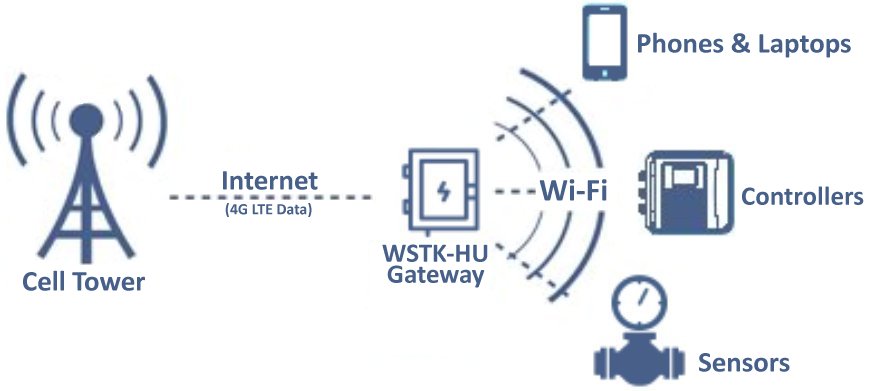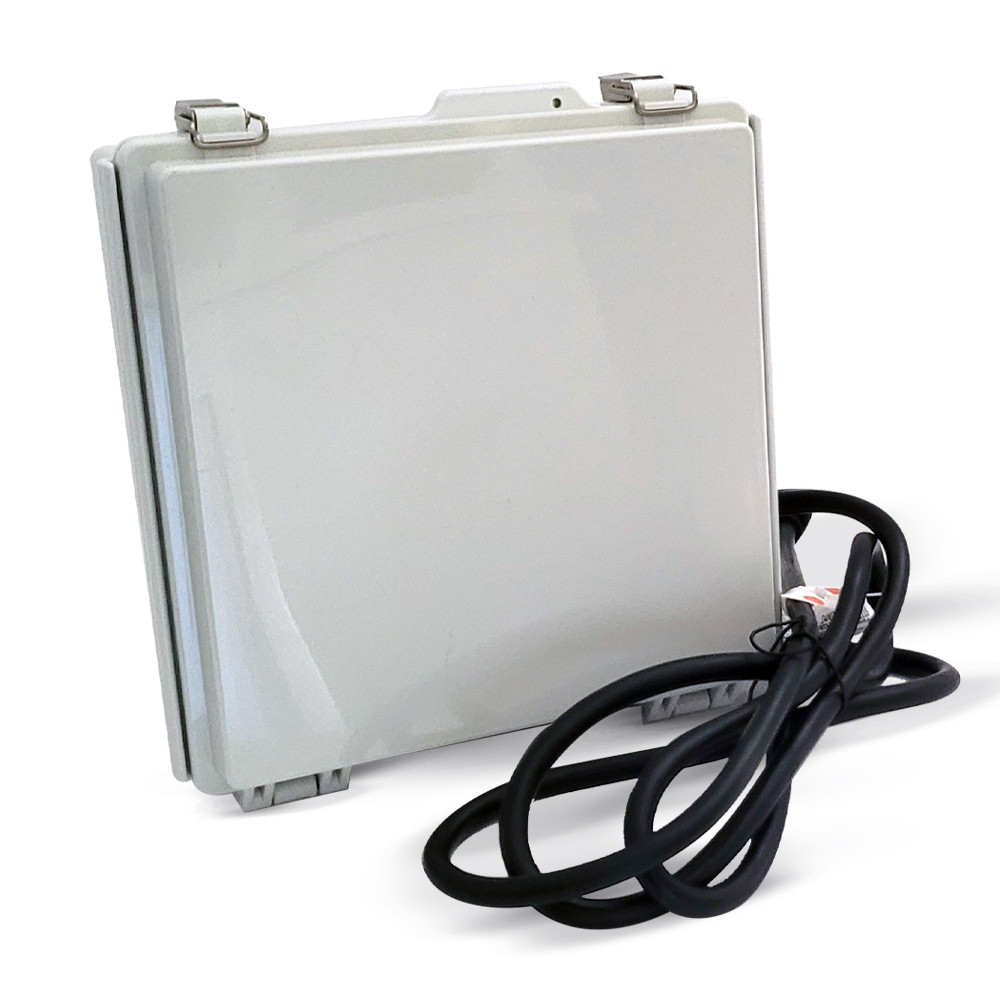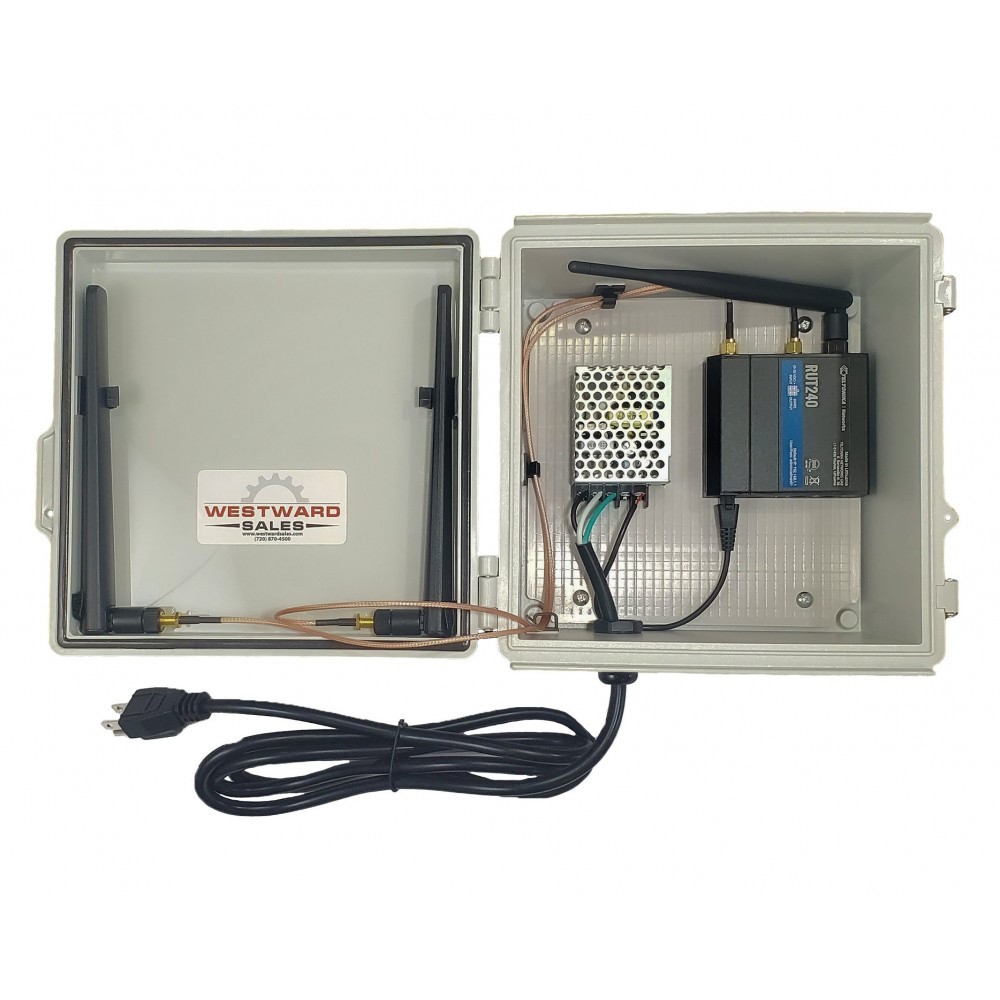When it comes to network management, outdoor applications present numerous challenges. It forces you to seek innovative technology in areas lacking connectivity or infrastructure. One powerful solution to poor connectivity is a rugged outdoor WiFi gateway. It connects remote WiFi devices to the Internet using the cellular network when wired Internet or access to public WiFi is unavailable. You can use them for continuous remote connectivity or short-term deployment. They are ideal for connecting WiFi-enabled devices like irrigation controllers, IoT sensors, and camera streams to the Internet.
What is an Outdoor WiFi Gateway?
A gateway is a node connecting two networks with different protocols. In this case, it converts a WiFi protocol to a cellular one. This conversion is transparent to the devices connected to the gateway. A gateway is similar to a hotspot but is specific to the connected edge devices and not intended for public use. Both provide Internet access, however.
How Gateways are Configured
Tapping into an existing cellular wide area network (WAN) is a straightforward way to get connectivity, as carriers provide Internet on their 4G LTE and 5G networks. An outdoor WiFi gateway consists of an industrial-grade router providing WiFi, a 4G or 5G cellular WAN interface, a SIM card, and Gigabit LAN connections for local peripherals. Internal functions are available for routing, security, control, and management. They feature cloud management, allowing you to access and monitor activity anywhere you deploy one. In addition, the electronics are integrated into a rugged box for protection. Gateways support major cellular carriers like Verizon, AT&T, and T-Mobile. Some configurations have two SIM cards for failover and load balancing.

Built for Hostile Environments
An average run-of-the-mill consumer-grade device cannot survive in hostile environments, so a critical concept for an outdoor WiFi gateway is ruggedness with absolute toughness. The industrial-grade core electronics operate continuously in extreme temperatures ranging from -40 to 85°C (-40 to 176°F). A robust IP67 and NEMA-rated enclosure is necessary to repel dust and all forms of moisture. Virtually any outdoor setting imaginable will not disrupt a well-designed gateway.
The Benefits of an Outdoor WiFi Gateway
An outdoor WiFi to cellular gateway offers several benefits, particularly in areas where reliable internet connectivity is limited or where cellular networks provide better coverage.
- Extended Connectivity: A gateway allows you to extend WiFi connectivity to outdoor areas where installing a traditional WiFi access point might be difficult. It can provide internet access in parks, gardens, stadiums, construction sites, and remote areas.
- Improved Coverage: Cellular networks offer broader coverage compared to WiFi networks. Using a gateway, you can leverage cellular connectivity to ensure a stable and consistent internet connection.
- Network Redundancy: An outdoor WiFi to the cellular gateway can serve as a backup internet connection in case the primary network fails. It ensures you have a reliable alternative source of connectivity, minimizing downtime and ensuring uninterrupted internet access.
- Versatility: The gateway can support various devices, including smartphones, laptops, and Internet of Things (IoT) devices. Because they are constructed with rugged, weatherproof components, they can be installed anywhere.
- Ease of Use: Outdoor WiFi to cellular gateways are designed for quick and easy installation. A user-friendly cloud-based web portal allows you to monitor fielded gateways from one dashboard from any location. It enables you to activate and deactivate data plans, troubleshoot issues, view data consumption, and manage billing for AT&T and Verizon.
- Cost-Effective: In some cases, using a cellular connection is more cost-effective than setting up a dedicated wired internet connection for outdoor areas. Leveraging existing cellular infrastructure eliminates extensive cabling or infrastructure investments.
The Disadvantages of an Outdoor WiFi Gateway
While an outdoor WiFi to cellular gateway offers several benefits, there are also potential disadvantages. Weighing the specific requirements and challenges of your intended deployment area will determine the feasibility and suitability of this solution.
- Data Limits and Cost: Cellular data plans have limited data allowances and a monthly subscription fee. They can be more expensive than fixed broadband connections, especially if you exceed your plan’s limits.
- Poor Signal: In areas with high cellular network usage or during peak times, the network may become congested, resulting in reduced speeds and degraded performance. Cellular coverage may be limited in remote or rural areas, leading to weaker or nonexistent connectivity.
- Signal Interference: Outdoor environments may have various obstructions and interferences that can affect WiFi and cellular signals. Physical obstacles such as buildings, trees, and terrain hinder signal strength and coverage, leading to slower or unreliable connections.
- Security Concerns: Wireless networks, including outdoor WiFi, can be vulnerable to security risks such as unauthorized access, data interception, or malicious attacks. Implementing proper security measures, including encryption protocols, password protection, and firewalls, is crucial to mitigate these risks.
- Power Requirements: Outdoor WiFi to cellular gateways require a power source. Power can be a limitation in areas where electricity is not readily available, making alternative power options such as solar panels necessary.
- Limited WiFi Range: While outdoor WiFi gateways can extend connectivity to outdoor areas, the WiFi range is still subject to limitations. The signal strength may decrease over longer distances. Additional access points or high-gain antennas may be required to provide a quality connection.
Turnkey Outdoor WiFi Gateways
Westward Sales provides a choice of a pre-built outdoor WiFi gateway containing all the components needed to establish a robust, secure WiFi signal in a remote location. For example, the WSTK-HU gateway is popular among landscape contractors connecting WiFi enabled sprinkler controllers to the Internet. There are many options, such as AC power or PoE, router capacity, and antenna configuration, but all offer these features:

- Connects remote WiFi devices to the Internet
- Use with irrigation controllers and outdoor sensors
- Protective, waterproof IP67 and NEMA 4X enclosure
- Industrial-grade components
- Includes active SIM card with a monthly data plan
- Assembled and programmed for quick deployment
A month-to-month subscription lets you turn off a gateway’s data plan when not in service. This feature is exceptionally cost-effective for agricultural and seasonal applications where systems are shut down for winter. There are no extra charges for roaming, activation, deactivation, platform usage, or out-of-hours usage, but overage fees apply.
- Choose AT&T or Verizon
- Competitive month-to-month data plan
- Disable billing when the system is winterized or offline to save money
- View gateways from one web dashboard even if they use different carriers, e.g., AT&T and Verizon
Tell Us What You Need
Contact Westward Sales today to configure an outdoor WiFi gateway that meets your unique needs. Our solutions aren’t limited to remote gateways, however. We offer a broad catalog of wireless networking solutions and can pair the right equipment to the job without extending your budget.

Thanks for sharing with us about outdoor wifi gateway provides remote internet.